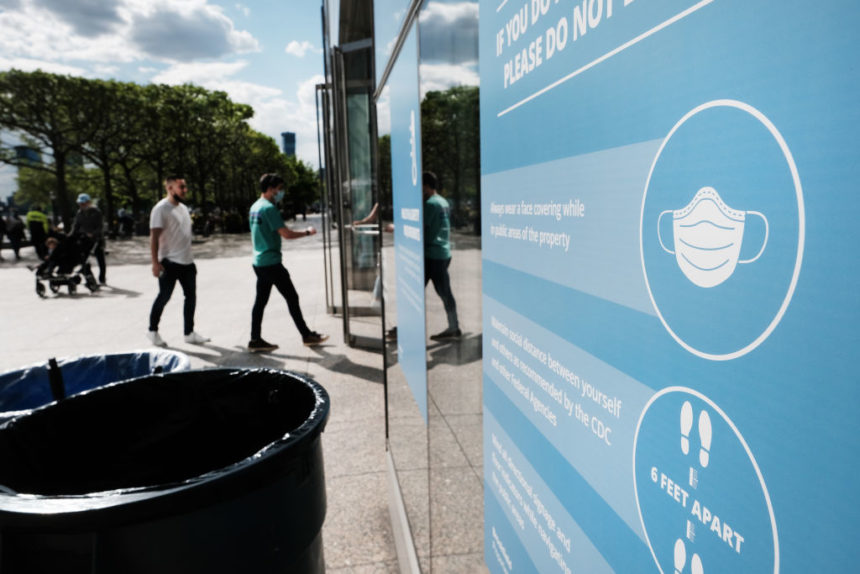COVID-19 has evolved during the last two-plus years through various surges and variants, and now appears to be edging toward long-awaited endemic status. But given the general reluctance to re-up preventative measures as case counts rise anew, one would be forgiven for thinking that it has long since achieved that status.
Welcome to the so-what? phase of the pandemic, in which a lack of consensus around the need for caution has prompted some people to throw up their hands in frustration and others to dismiss the ongoing threat entirely.
Many public health officials are re-re-re-sounding the alarm. This week, the Biden administration extended the public health emergency for another 90 days, while Philadelphia effected the first reinstatement of mask mandates in a major city.
Still, the nation’s seven-day rolling average of cases is at its lowest level since July 2021, the seven-day rolling average for hospitalizations is down more than 93% from its peak in mid-January, and more than 80% of Americans have received at least one dose of a vaccine.
So can quote-unquote normal life coexist with the still-deadly, still-prevalent virus? That’s the question marketers and public-health officials alike are attempting to answer.
If the pandemic has proven anything, it’s that understanding consumers and addressing their healthcare expectations are top priorities — and often a fool’s errand.
Healthcare Success CEO Stewart Gandolf cited the early-pandemic telehealth surge, and its better-than-expected staying power, as proof that most consumers are “irrevocably changed.”
“We’re going to see even more empowered consumers that just want to race towards healthcare on their own terms,” he said. “They’ve tasted victory, so it’s hard to go back.”
An Insider Intelligence report released in December 2021 found that nearly three-quarters of healthcare executives are “highly likely” to invest in or expand use of patient access technology as a response to consumerism in the industry.
Danny Fell, a marketing strategist in Optum’s provider analytics group, believes that targeted digital data strategies have allowed marketers to find specific audiences through segmentation. However, he adds that this development is more challenging because marketers can no longer communicate to huge audiences as effectively as they did a decade ago.
“You’re having to deploy more of what I would call intelligent marketing to be able to speak to discreet audiences – and at the same time, consumers are more savvy today and they want more personalization,” Fell explained. “They want to be spoken to more in real-time around their interests and needs.”
Even before the pandemic, Fell added, the emphasis had shifted from building a healthcare brand over a longer stretch of time to a do-it-now mentality. In approaching the uncertainty of endemicity, he considers marketing professionals to be “inherent problem solvers” who face challenges all the time, such as economic constraints or staffing issues.
“We’re coming out of this period needing more marketing, branding and communication than ever and a lot of these marketing departments have been cut, or there’s been disruption in hiring and the availability of marketing professionals,” he noted. “So the collective marketing profession is coming into this period with one arm tied behind our back, in that we’re struggling to do more with even less resources in many cases.”
The country’s indifference to the continuing threat notwithstanding, the expected-the-unexpected mantra of the last two years is likely to endure during whatever comes next, according to Lauren Farabough, director of healthcare strategy at MHP/Team SI.
Farabough believes marketers must prioritize patient education and distributing accurate information about changes as they occur, often through digital means like chatbots.
“You’ve got to think about making sure that patients feel safe in their whole experience and make things as available online as possible,” Farabough explained. “With a lot of our clients, we’ve seen an influx of patients reaching out via social media or website platforms in ways that they haven’t before. So clients are making sure that they can get that information to consumers and that people are monitoring those areas so that they can get quick responses and ensure that they get the information they need.”
In a blog post published in February, Farabough shared five strategies for healthcare marketers as the transition to a post-COVID world continues. She emphasized that while some patients have gone back to “normal,” it’s important for healthcare organizations to address the needs and concerns of those that haven’t.
Many patients who avoided or delayed care due to COVID suffered health problems as a result, Farabough added. So it’s incumbent upon healthcare marketers and organizations nationwide to “revise the whole experience” and assure their safety.








